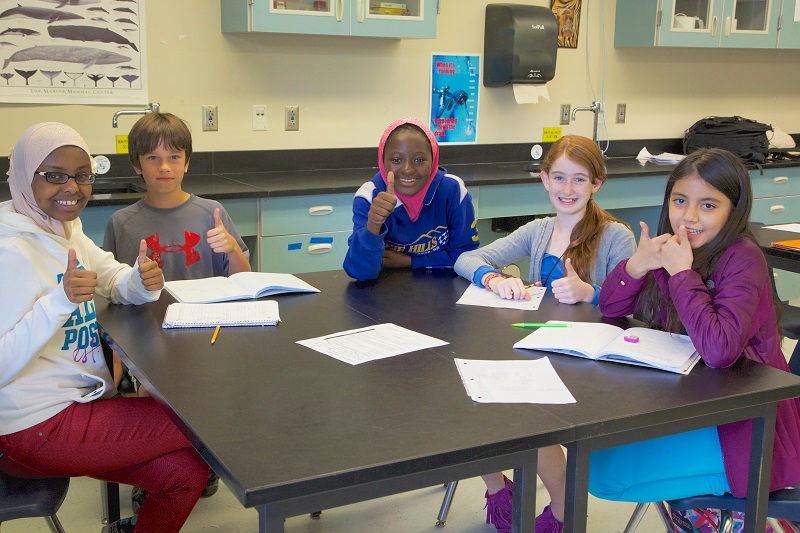Stephanie Cherrington & Payton Richardson share about the work of the Eastside Pathways Partnership in a blog post published on WA Cradle to Career Advocacy Network
“The focus for change is the system. The agent of change is the individual.” – Mary Beth O’Neil
This quote is meaningful because in its simplicity, it describes the work of Eastside Pathways Partnership.

Photo Credit: Lisa Bontje
Eastside Pathways has been doing this collective impact work for 10 years. It might have saved a lot of time if we’d heard or read this quote when we started. Who knows, maybe we did see it before. But maybe we weren’t ready, as individuals, to see it, fully understand it, and embrace it as a representation of our work.
Eastside Pathways is a community partnership made up of different stakeholders – public, private, non-profit organizations, and individuals – who work or live in East King County (directly east of Seattle) – who regularly come together to align and improve how we work together. We do this so that we can ultimately realize equitable pathways and improved outcomes for children, youth, and young adults from cradle to career.
We now understand that if we’re going to improve systems, those of us working for businesses, school districts, municipalities, faith-based organizations, post-secondary institutions, healthcare providers, funders, etc., along with community individuals and youth must be individually willing to act and be different. We must be willing as individuals to activate ourselves perhaps in ways we’ve not considered before.
In addition to establishing a common agenda and shared measurements, other elements present and prominent within our movement are collaboration instead of competition and continuous communication. When each agency in a community views the “problem” (mental health issues, substance use, homelessness, criminal behavior, chronic disease, educational attainment, etc.) through their own perspective… we have isolated impact. Collective impact allows for the emergence of innovative ideas/solutions, when communities develop a common language, a shared understanding/perspective of the “problem,” and work together towards a shared goal. Effective collaboration requires strong relationships and a process for coming together & learning and creating an environment in our community where agencies are supported and rewarded for collaboration and innovation.
We must be willing to shift where and how we spend our time. This could include an increased focus on building relationships with others whom we’ve not regularly been connected. Or shifting how we show up in a room so decision-making power is ceded to another individual. Or co-developing solutions with those most impacted. Perhaps this shows up as the ability to not jump to solutions but rather take the necessary time to listen, understand, analyze, and test what may be longer-term solutions.
We’re not often rewarded for taking longer in our work but perhaps we should be rewarded for taking the time, to learn, test, adjust, and work with others? Perhaps that “boss” who is evaluating us should also be willing to modify his/her/their practices in response to our feedback?
These are just a few examples of how individuals can begin to shift. These shifts become the pebble which is thrown into the pond and then sets off the series of ripples in the water – all of these individual behaviors drive our systems.
As the “backbone” organization for our community partnership, our role is to convene, facilitate, and guide data and communications for the partnership. Ultimately, we are responsible for creating the “container” for stakeholders to come together, so they understand, align, and work with one another. To do this, we focus intently on the individuals in the room and how they are going to activate themselves differently when they walk out of that room. How are they going to create a better system?
The work of creating a better system requires sustained effort and perspective. Pulling the gaze back from an individual, who is activated to spend their time differently building new relationships, one can see organizations that begin to cede and share their institutional power to intentionally co-develop solutions. Pulling back even further from these refreshed organizations, one ideally sees a system that understands, analyzes and tests sustainable long-term solutions for ever-increasing community impact. Within our work we now recognize that the agent of change is the individual and the focus for that change is the system. We also know that the sustained work gathering allies and moving sustainably between those entities is the wonder of a partnership.
A few recent examples of what we’ve seen from Eastside Pathways Partners:
- Shared Accountability: Eastside Baby Corner has shifted their practice of working only through the school district to now include NISO Programs, the only LatinX led organization focused solely on the LatinX community in East King County. This ensure that LatinX families are directly connecting with leaders in their own community.
- Co-Creation and Shared Power: When PEPS (Program for Early Parent Support) stared a Spanish early learning group, they worked with the LatinX community to review and improve their group curriculum and make adaptations. The result was a modified PEPS-style pilot using a WhatsApp platform.

